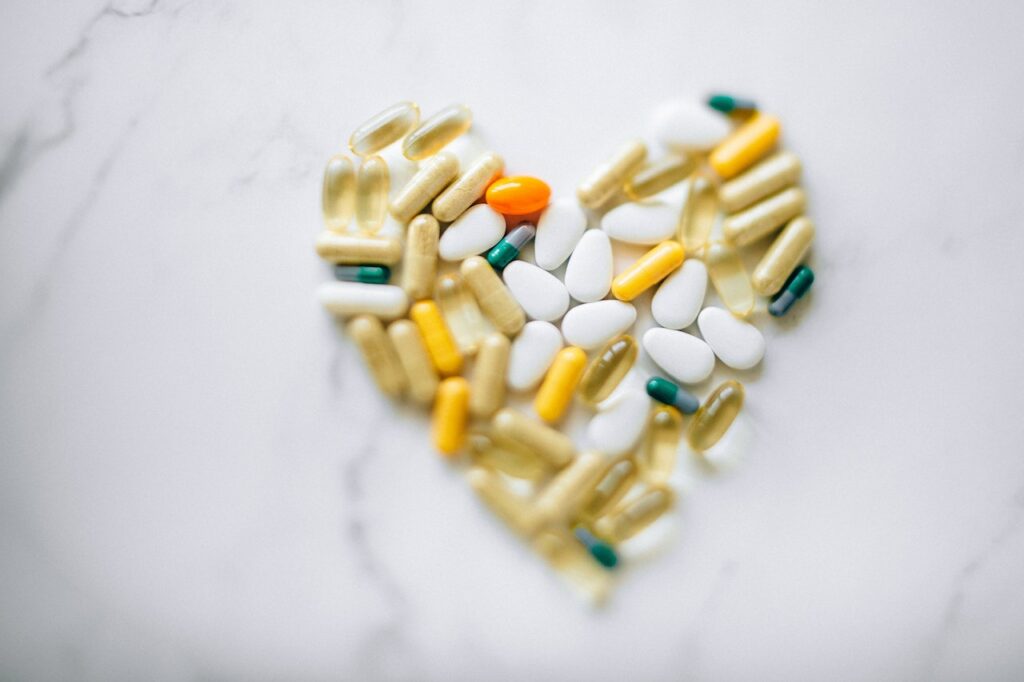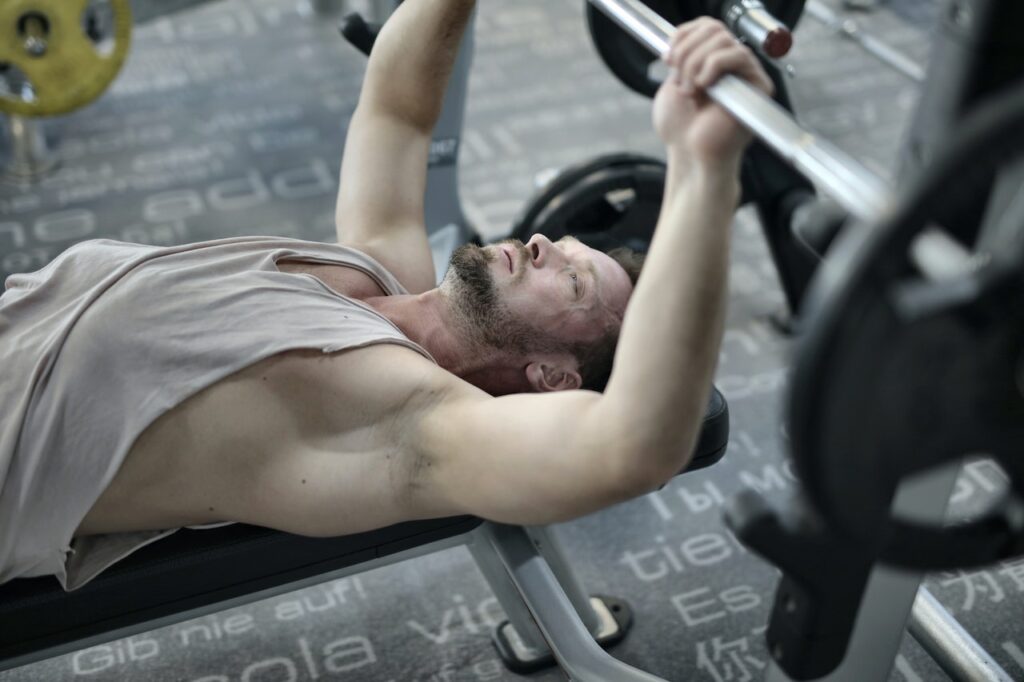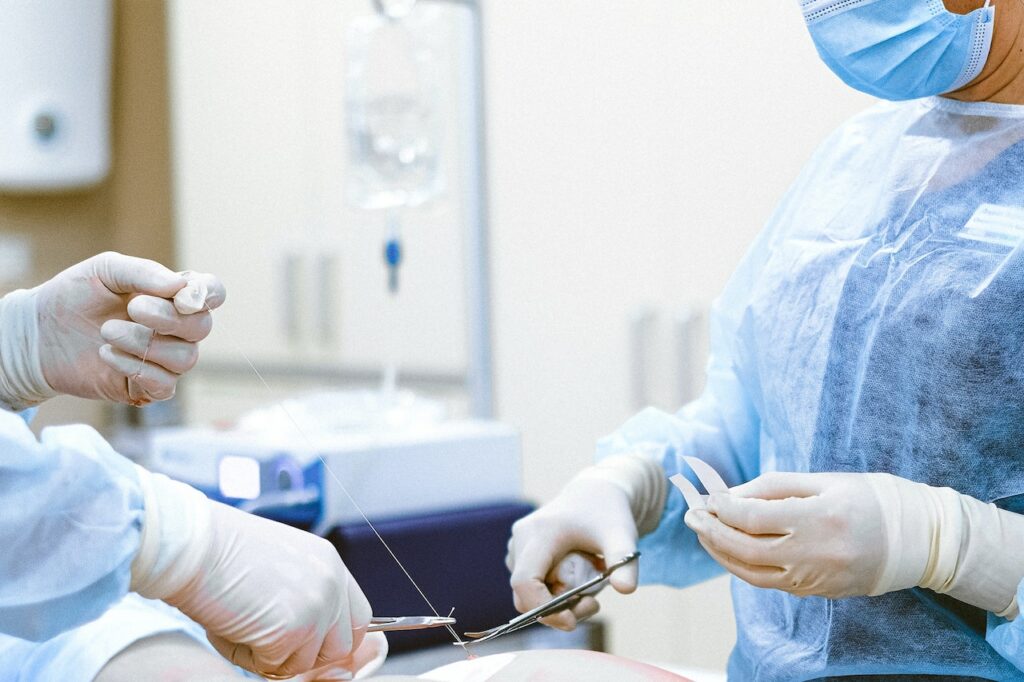Every man who suffers from the abnormal growth of breast tissue wants to know how to get rid of gynecomastia. The condition, generally caused by an imbalance in hormones, has a number of possible solutions.
In this article, we plan to explore the various methods one can use when considering how to get rid of gynecomastia. From non invasive treatments to gyno surgery, read on to learn more about the condition and what it entails.
What Is Gynecomastia?
Gynecomastia is a condition in which boys or men develop excess breast tissue due to abnormally active breast glands. All males have breast glands, but they are generally inactive. In cases of gynecomastia, these glands become active, and excess breast tissue forms.
Gynecomastia has 4 discrete grades. In grade 1, the breast tissue build-up is slight and barely noticeable, even when topless. Through grades 2-4, the breasts become more pronounced and may even come to resemble fully developed women’s breasts.
-> Learn more about the various stages of Gynecomastia
The condition is harmless, but can be extremely embarrassing for the sufferer. Treatment is therefore usually a top priority.
It is also important to note that man breasts can also develop due to excess fat tissue around the area. This condition is known as pseudogynecomastia.
While some cases may solely be due to excess chest fat, it is quite common to have both excess breast gland tissue and excess breast fat tissue as culprits causing gyno (a gyno pinch test will help determine your condition).

What Are The Causes Of Gynecomastia?
Although there are many conditions, medications and/or other substances that can lead to the development of true gynecomastia, they usually boil down to one thing: hormone imbalance.
Gynecomastia is, in essence, an excess of estrogen, a lack of testosterone, or a combination of both. When thinking about how to get rid of gynecomastia, it’s important to bear this in mind.
With that said, let’s look at the various potential causes of gynecomastia.
Infancy and Adolescence
Both infant boys and those who are entering puberty can develop temporary cases of gynecomastia.
The former is caused by lingering excess estrogen from the mother’s body, and quickly resolves itself in a matter of months. The latter is caused by the inevitable hormonal upheaval that happens during puberty, and resolves within 6 months to 2 years.

Substance Abuse
The excessive use of certain substances can lead to cases of gynecomastia. Such substances include heroin, methadone, marijuana, methamphetamine, and other members of the amphetamine family.
Alcoholism
Alcoholism is another form of substance abuse, and one that may lead to some gyno effects.
Beer is a particular factor in this, because it’s packed with plant-based compounds called phytoestrogens. These compounds are so named because they mimic the effects of estrogen.
Though it hasn’t been definitively proven, some scientists believe that excess phytoestrogen can lead to similar effects to that of excesses of true estrogen.
Prescription Medications
As many as a quarter of gynecomastia cases can be attributed to the use of prescription medications. These include:
- Ulcer medications
- HIV medications
- Antipsychotics
- Antidepressants
- Certain heart disease medications
- Antiandrogens
- Hypertension medications
Check with your doctor to understand if using these medications may lead to a reduction in testosterone or an increase in estrogen production. If so, that’s not a reason not to take your medication; it’s simply better to be prepared and to take steps accordingly.

Aging
Aging leads to a progressive drop-off in testosterone levels in men. This starts at around the age of 30 and continues throughout the rest of your life. Over-50s are particularly at risk of developing gynecomastia.
Hypogonadism
Hypogonadism is a condition wherein the (male) subject suffers from a lack of androgens (male hormones).
This may be caused by damage to the testes (whether radiological, mechanical or pathological in nature) or it may be caused by damage to the pituitary gland or hypothalamus.
Tumors
Certain tumors can cause gynecomastia. Those typically responsible are tumors of the testes, pituitary glands, lungs and adrenal glands. These can cause an excess of estrogen and rapid-onset gynecomastia.
Prostate cancer is not directly responsible for gynecomastia, but the antiandrogen medications used in its treatment can be (as they suppress testosterone production).
Chronic Diseases
Disease of the liver and kidneys, as well as hyperthyroidism, can all wreak havoc on hormonal balance and lead to an increase in estrogen and a decrease in androgens.
Hyperthyroidism can also lead to an increase in androgens, which ironically results in a corresponding increase in estrogen (the excess androgens are converted by the body).
Anabolic Steroids
Gynecomastia is often observed in professional bodybuilders for one simple reason: use of anabolic steroids.
These steroids promote the production of testosterone, but much like the hormonal imbalance found in hyperthyroidism, the body responds by converting excess testosterone into estrogen. This leads to gynecomastia in many cases.

How to Get Rid of Gynecomastia without Surgery
Gynecomastia can be a complicated condition and there are a number of non surgical treatments available.
A good number of those are non-surgical in nature, but it’s worth pointing out that for any case of gynecomastia past grade one, surgery is usually the only option.
Let’s take a look at how to get rid of gynecomastia without surgery.
Exercise
First things first – exercise cannot eliminate gynecomastia, but it can help mask the biggest symptom (the development of breasts). Less body fat and more muscle mass means less prominent breasts, as evidenced by the typically small breasts of female bodybuilders.
So, what exercises are the best way to hide gynecomastia?
Flys
This effective form of resistance training can really only be done in a gym, but it’s well worth the time and effort that goes into it.
At its most basic, a fly involves pulling your arms together in front of your chest. There are several variations that work in slightly different ways. Some of the most effective include cable, butterfly machine and dumbbell flys.
Presses
Another classic gym exercise, presses work the arms and chest and come in many varieties. Bench, incline, decline and squeeze presses are some of the more popular variations.
Push-Ups
The beauty of this classic exercise mainstay is that it can be done pretty much anywhere there’s enough space. There are also no end of variations, from the classic push-up to wide-arm push-ups, and knee push-ups for those who need time to build up their muscles.

Cardio
Cardio might not work to directly build muscle, but it does help with overall health and fitness, and it reduces body fat (which can reduce breast size). Some of the best kinds of cardio include:
Swimming
Swimming is highly effective cardio because it works every single muscle group in the body. When you’re moving against water, it takes effort to move any muscle, and so there’s no cardio quite like swimming. It’s also low-impact, meaning that your joints aren’t jolted and there is a lower likelihood of injury.
Jogging
Jogging is higher impact than swimming so it’s important not to overdo it, but it’s a great workout nonetheless. It’s good for heart health and toning your leg muscles, and will lead to a general reduction of body fat if done regularly enough.
Walking/Hiking
Not every form of exercise has to be taxing or tiring, and the humble walk proves this. An hour-long walk can burn more energy than a 30-minute run, and so is good for reducing body fat over time.

Drug Abstinence
This does not refer to discontinuing prescription meds that might be contributing to gynecomastia – speak to your doctor if this is the case. Rather, it refers to illegal substance abuse.
Substances like heroin, methamphetamine, marijuana and more can contribute to cases of gynecomastia.
If caught early enough, then discontinuing the use of such substances can lessen the symptoms and even result in the condition resolving itself.
Off-Label Medication Use
Some medications for unrelated conditions can have a secondary use in the treatment of gynecomastia. These include Raloxifene and Tamoxifen, both of which ordinarily have applications in the treatment of breast cancer.
Be sure to always consult a doctor before taking any sort of medication.
Treatment of Other Conditions
There are no small number of conditions that can cause gynecomastia, as we’ve seen.
Whether suffering from liver dysfunction, hyperthyroidism or tumors of the pituitary/adrenal glands, treatment of these conditions can often remedy hormonal imbalances and thereby alleviate the symptoms of gynecomastia.
Coolsculpting
Coolsculpting is an entirely non-invasive procedure to reduce fat. Fat cells are targeted and frozen with the use of a special wand placed on the skin. Then the fat is broken down into liquid & reabsorbed into the body.
Although Coolsculpting may reduce the fatty tissue, it does not remove the breast gland tissue, and as such may not be a long-term solution to the problem.
It should also be noted that Coolsculpting is generally not nearly as effective as liposuction to reduce excess fat.

How to Get Rid of Gynecomastia with Surgery
As previously mentioned, if gynecomastia has progressed to grade 2 or later, then the above options are of limited or no effectiveness. Surgery is the only reliable recourse at this point.
Surgical options for getting rid of gynecomastia include:
Liposuction
Liposuction involves breaking up fat cells in the target area (here the chest) and inserting a cannula to agitate the fat tissue before sucking it out.
Liposuction by itself is of only limited effectiveness, as it only removes fat tissue and not the excess breast gland tissue.
Excision of Breast Gland Tissue
This procedure involves the complete surgical excision of the excess breast gland tissue, and usually any additional excess skin.
This surgery is very effective in eliminating true gynecomastia and ensuring that it doesn’t come back.
Combination Liposuction/Breast Gland Tissue Removal
Generally considered the best and most final treatment of gynecomastia, this treatment is considered particularly effective because it:
(A) removes not only breast gland tissue but also fat, and (B) results in the most esthetically pleasing post-surgery chest for most men.

How To Get Rid Of Gynecomastia Recap
When exploring how to get rid of gynecomastia, it’s clear to see that there are several factors at play.
The cause of one’s gynecomastia is very important when considering treatment options. Gynecomastia brought on by anabolic steroid abuse, for instance, may be treated very differently from a case occasioned by hyperthyroidism.
This means that it’s important to first identify the cause of gyno before entering into a treatment plan – at least, in the case of grade 1 gynecomastia.
As we have seen, if gynecomastia has progressed to grades 2 through 4, then most likely no amount of exercise, diet and medication is going to eliminate the problem. In these cases surgery is usually going to be the only viable option left.
Whatever the cause of a case of gynecomastia, however, it’s reassuring to know that there are always treatment options available to obtain an ideal male chest. It’s simply a case of choosing the right treatment for you.
